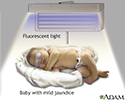If you have pain and stiffness in the bottom of your feet and heel, you may have a problem called plantar fasciitis.
Plantar fasciitis is irritation and swelling of the thick tissue on the bottom of your foot. The tissue is called plantar fascia. It connects your heel bone to your toes, creating the arch of your foot. Plantar fasciitis occurs when you overstretch or overuse this thick band of tissue. It can be painful and make it hard to walk.
So, how do you know if you have plantar fasciitis?
You will probably have pain and stiffness in the bottom of your foot or heel. The pain may be dull or sharp. The bottom of your foot may ache or burn. The pain is usually worse in the morning when you take your first steps, after standing or sitting for a while, when you climb stairs, or after you exercise.
To treat this condition, your doctor will check the bottom of your foot for tenderness, swelling, redness, and stiffness or tightness in your arch. The doctor may first recommend that you try ibuprofen (Advil, Motrin) to reduce your pain and swelling. You can also try heel stretching exercises, resting as much as possible for at least a week, and wearing shoes with good support.
You can also try applying ice to the painful area at least twice a day, ten to 15 minutes each time. You might try wearing a heel cup, felt pads in your heel area, or shoe inserts. Wearing splints at night can stretch the injured fascia and allow it to heal. This can be particularly helpful.
If these treatments don't work, your doctor may recommend you wear a boot cast for three to six weeks, or wear custom-made shoe inserts called orthotics, or have steroid shots in your heel. Some people even need surgery to release the tight tissue in your foot.
The good news is that non-surgical treatments usually improve the pain. However, treatment may last from several months to two years before the symptoms get better. But most people will feel considerably better within nine months.
 All rights reserved.
All rights reserved.















































































































































































































































































































































































































